The fitness industry has come a long way from its humble beginnings. Fitness has gone through many transformations throughout history, with plyometric-based activities being the first main form of staying in shape. People trained for functionality and usability of techniques and strength in general. Today, we have become much more personalized and have many driving factors behind why and how we work out.
.jpg?width=404&name=GettyImages-1132973672%20(1).jpg) Fitness Fads vs. Classic Methods
Fitness Fads vs. Classic Methods
Today’s fitness industry is wildly different from even 10–15 years ago. We have had many fads in the industry that have peaked and disappeared. Some of these were deserving of such a fate, but there are some staples that have seemed to stand the test of time. These types of fitness methods include standard weightlifting/bodybuilding style, pioneered by the generation of Arnold Schwarzenegger, as well as the marathon runs that started centuries ago with Olympic athletes. In my opinion, some people stick to traditional methods, and others like to go with what is new and fresh in the industry.
Group Fitness Trends
Group fitness classes are adapting to changing wants. These wants have gone from the likes of Tae Bo and Jazzercise to Boot Camp–style classes, CrossFit, hot yoga, immersive spin classes, and a mix of different styles like PiYo and others. This has shown that classes are becoming more varied, and are allowing people to be more specific in the type of class they want to participate in. I love this adaptation, and I hope it continues to grow for people who like the group environment. (Look here for more of what NIFS is offering in Group Fitness.)
The Impact of Technology on Fitness
Today’s fitness industry is quickly incorporating technology to improve not only the experience of working out, but also the data available afterward. People are becoming more educated about the effects of exercise from a physiological standpoint, and are tracking metrics normally not available to people even a few years ago. Wearable technology allows people to track their heart rates and performance in real-time, which provides an intrinsic motivation to continue on their workout routine. This is just one part of the industry that is quickly seeing changes.
Fitness equipment seems to be smarter and smarter by the day, with machines getting larger TV screens that give many options in real-time data, as well as entertainment like video games controlled by the exercise performed (such as with spin bikes and rowers).
My Predictions
All this advancement in technology has inspired my predictions on the future of the fitness industry. I believe the introduction of DNA-based fitness testing and performance measurement will make its way into the mainstream industry soon, as well as augmented-reality–based training, allowing individuals to escape the standard gym environment and become fully immersed in a new experience. It seems that social media is a large driving force for these new technologies and workout types, and I can see these being popular for people who want to try the newest and greatest technology in their workouts.
If you ask me, I will stick with the simple workouts: run and lift some metal. Call me old school, but with the advancement of fitness technology and equipment, the same task needs to be accomplished at the end of the day, and if I can simplify that process, I will go that route. However, I still look forward to what the future holds!

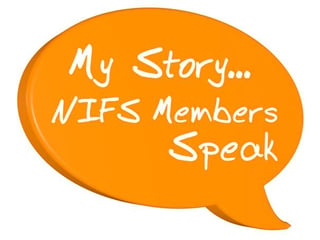 The benefits of providing an onsite corporate fitness center at the workplace are far-reaching and they may or may not have anything to do with reducing health care costs. For leadership, it’s easy to focus on this tangible measurement and lose sight of other reasons to support employees in their health and fitness goals.
The benefits of providing an onsite corporate fitness center at the workplace are far-reaching and they may or may not have anything to do with reducing health care costs. For leadership, it’s easy to focus on this tangible measurement and lose sight of other reasons to support employees in their health and fitness goals.
.jpg?width=320&name=TRX%20Cher%20(2).jpg) There are a number of misconceptions these days about personal trainers and what it’s like to be one. Don’t all personal trainers have perfect bodies and eat nothing but fruits,
There are a number of misconceptions these days about personal trainers and what it’s like to be one. Don’t all personal trainers have perfect bodies and eat nothing but fruits, 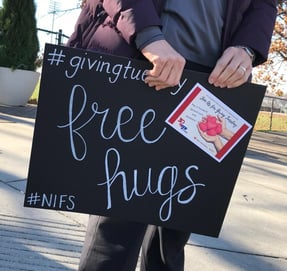

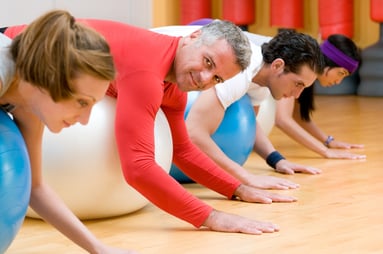 We’re onto something in
We’re onto something in 
 Six months ago, a friend dared me to give up cardio for three months and focus on strength training. My initial response was, “No way! I’m a runner, I’ve always been a runner. There is no better exercise than running!” My friend was relentless and eventually I agreed to take a brief hiatus, although I was convinced that I would turn into a mushy ball of goo if I didn’t get in my daily run.
Six months ago, a friend dared me to give up cardio for three months and focus on strength training. My initial response was, “No way! I’m a runner, I’ve always been a runner. There is no better exercise than running!” My friend was relentless and eventually I agreed to take a brief hiatus, although I was convinced that I would turn into a mushy ball of goo if I didn’t get in my daily run. 
 Lots of research has been done over the years to figuret out the best recipe for success when it comes to weight loss. Diet alone? Exercise alone? Or a combination of both? It should come as no surprise that the key for weight loss and keep it off is to combine a low-fat, lower-calorie diet with an exercise routine.
Lots of research has been done over the years to figuret out the best recipe for success when it comes to weight loss. Diet alone? Exercise alone? Or a combination of both? It should come as no surprise that the key for weight loss and keep it off is to combine a low-fat, lower-calorie diet with an exercise routine. 
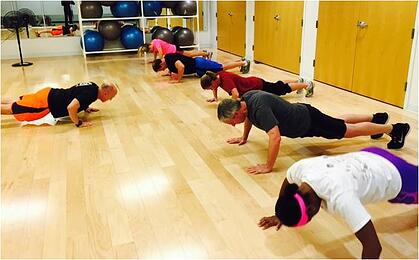 NIFS isn't the only agency that provides fitness management expertise to businesses. There are several like us because the market demands it. While many organizations have adopted a DIY attitude about managing their own fitness programs, an additional (and substantial) set of businesses has recognized the value in outsourcing fitness center management for their corporate fitness center or in their senior living community.
NIFS isn't the only agency that provides fitness management expertise to businesses. There are several like us because the market demands it. While many organizations have adopted a DIY attitude about managing their own fitness programs, an additional (and substantial) set of businesses has recognized the value in outsourcing fitness center management for their corporate fitness center or in their senior living community.
 Best Weight-Loss Techniques
Best Weight-Loss Techniques
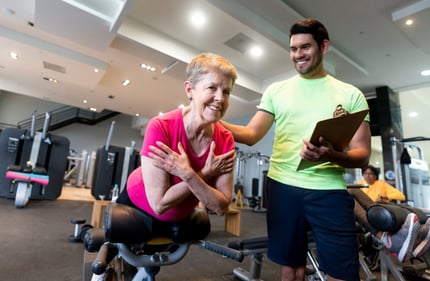 While the size and shape of fitness spaces can vary dramatically from one senior living community to the next, it is very common for there to be at least some dedicated space with exercise equipment for resident use. It’s also quite common for communities to offer group exercise classes as part of the activity program. In some cases, communities also offer a personal training service.
While the size and shape of fitness spaces can vary dramatically from one senior living community to the next, it is very common for there to be at least some dedicated space with exercise equipment for resident use. It’s also quite common for communities to offer group exercise classes as part of the activity program. In some cases, communities also offer a personal training service.